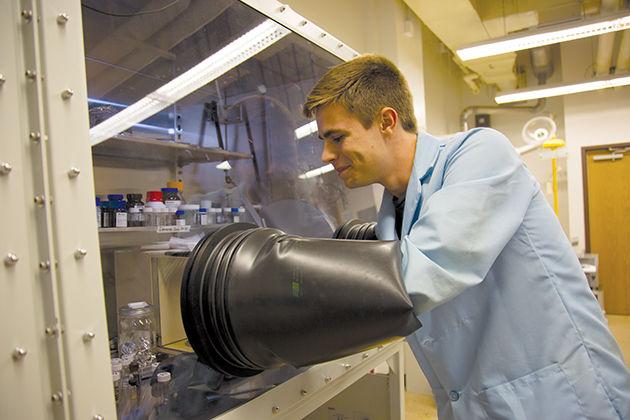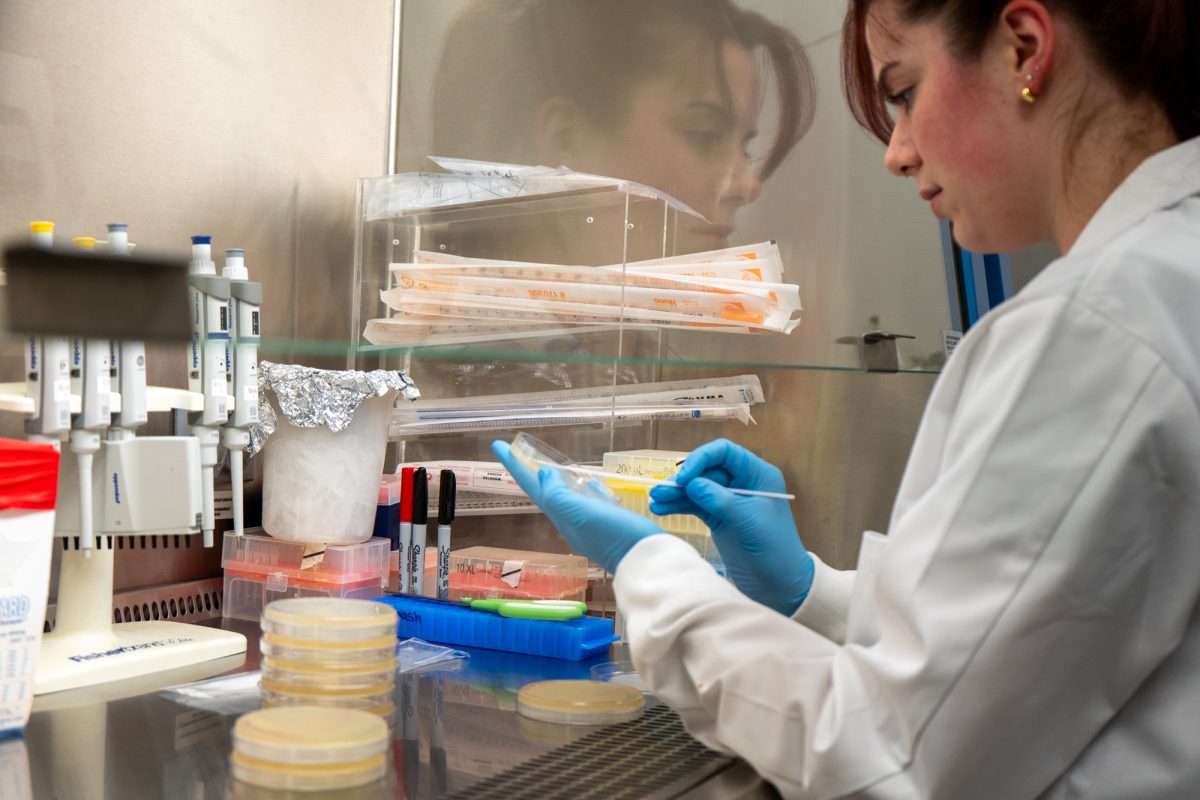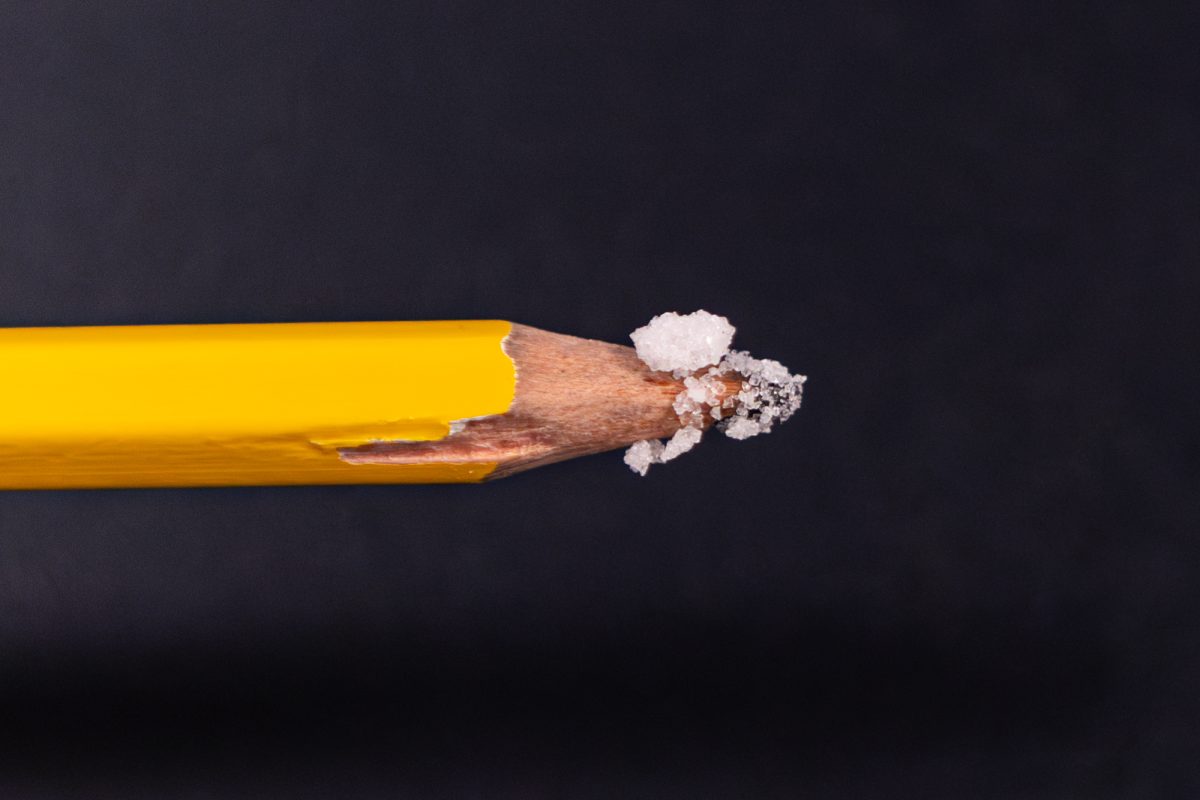Just as the first Bronze-Age of blacksmiths heated metal to forge new tools, researchers in the College of Science are warming their furnaces to create unusual compounds in search of a better superconducting material.
The dean of the College of Science, Meigan Aronson, brought the project with her when she accepted her position last year. Researchers on the project hope to create a material that acts as a superconductor at room temperature.
Aronson said superconductors are a special collective state of electrons in which all of the electrons in a compound bond into pairs, leading to no resistance for electricity passing through the material.
“Because it takes a certain amount of energy for an electron to spin up and one will spin down tied together into a pair, you have to break that pair in order to actually have resistance,” Aronson said. “So the fact that you have this pair is the origin of this resistance.”
Research associate Hua He said currently all known superconducting materials are only superconductors at very low temperatures.
“So far, the highest critical temperature is slightly above 200 K, Kelvin, so this is almost 100 K below room temperature,” He said. “So in terms of practical use it’s not that useful. You always have to cool your materials 100 degrees K below the room temperature for them to become zero in terms of resistance.”
Aronson said a significant amount of energy is wasted due to resistance in power cables.
“Probably between 15 and 20 percent of the energy is dissipated in transporting the energy to the end user that is your house or something along those lines,” Aronson said. “There are certain applications even today where superconductivity is useful even if you have to cool our materials down and put a lot of energy into the refrigeration.”
He said the project could result in a substantial difference in saving power worldwide.
“When you talk about the power wasted, aluminum and copper wire all have resistance and when we transfer electricity, we will waste a certain amount of power just doing the distribution,” He said. “When you have superconductor materials, which is zero resistance, during this distribution there will be zero waste.”
Research assistant Shelby Zellman said the project involves designing, forming and measuring the material across two different labs at A&M. Zellman said creating the material takes between three to 10 days depending on a number of factors.
Zellman also said the project uses a flux method to create the compound, where after carefully measuring the appropriate required materials, researchers will seal the materials necessary to make the compound in a quartz tube along with an element at a low melting temperature to give the crystals a place to grow.
After the material in the tube is properly melted down the tube is moved to a centrifuge where the extra element is separated, isolating the new compound, Zellman said. The material is then carefully removed and sent over to be tested for a number of characteristics.
“When I say very carefully I mean we just kind of very carefully smash it,” Zellman said. “You don’t want to damage anything that’s in it, but really it’s however you can get it open.”
Aronson said while superconductivity is the focus of the project, tests are also run for other key characteristics of each material.
“Looking at something with your eyes doesn’t tell you all that much about what it is, so then there is the whole measurement program,” Aronson said. “This is the sort of project where you start at the beginning, you have an idea, you make the material, you do the tests, you discover something and you announce it to the world with a paper or a talk.”
Aronson said nearly every material created by the project ends up with an interesting or unexpected quirk.
“It takes a long time to figure all of these things out,” Aronson said. “You make the material and you do various measurements; there is no guarantee the first time you make it it’s going to be perfect and there might be issues. There is a lot of feedback between the measurements you make on the material and you come back and talk to the sample guys and say, ‘Well, maybe what we need to do is figure out a way not to get silicon in it.’”
Blacksmithing for a compound
September 19, 2016
Photo by Photo by Hanna Hausman
Sophomore Mason Klemm works to prepare a sample for the flux method.
0
Donate to The Battalion
Your donation will support the student journalists of Texas A&M University - College Station. Your contribution will allow us to purchase equipment and cover our annual website hosting costs.
More to Discover








